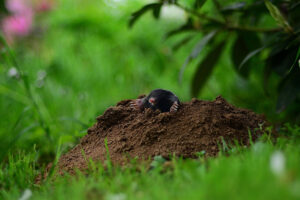This page may contain affiliate links. If you click and buy, we might get a small commission at no cost to you.
If you’re someone who’s always looking for the most effective ways to keep your lawn in tip-top shape, you’ve likely heard the term “overseeding”. So what is overseeding your lawn exactly? We’re going to tell you all about it, inside and out, so that by the time you’re finished reading our guide you will basically be an overseeding expert.
What is overseeding your lawn?
In the simplest terms possible, overseeding is planting grass seed directly onto already-existing lawn without turning the soil. The benefit of this practice is a thicker, greener, richer, and more resilient lawn. If you’ve noticed that your lawn is a bit thin or patchy and you’d like to thicken it up, this is one of the most effective ways to go about it.
Why should you overseed your lawn?
Each year, it seems like more and more cities around the United States are dealing with droughts. If your lawn is suffering from their effects, insect or disease damage, or just generally sparse/bare/dry patches then overseeding may be the right way to go. If you feel that your grass is vulnerable to disease, insects, heavy traffic, and so on, then overseeding can help make sure it holds up better in these situations. Moreover, you may find that you don’t have to use as much fertilizer, water, and/or pesticides!
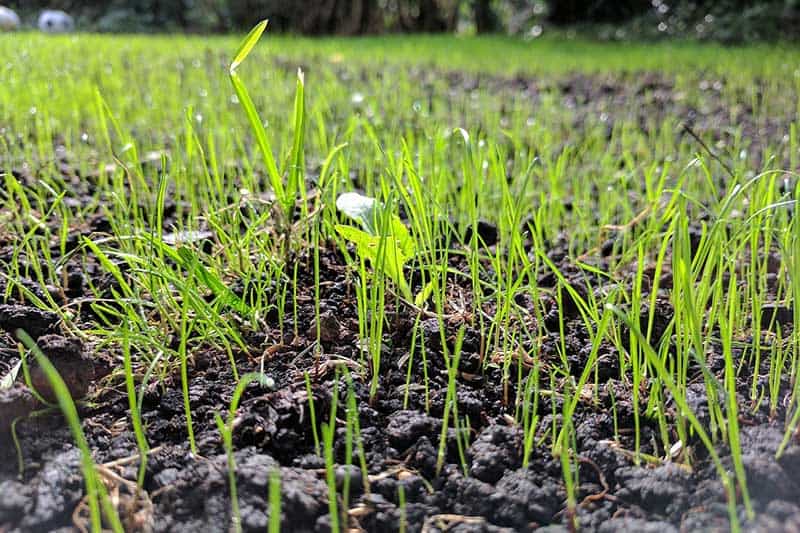
When should you overseed?
This answer will vary greatly, depending on where you live and what the season is. For example, if you live in a cooler climate up north, you’ll want to overseed in the late summer or early fall. You don’t want it to be too hot or too cold. However, the soil must be moist enough so that germination is favorable. If you can’t do it in the early fall, the late spring is also a great alternative.
If you live in a hot California climate, then you may be better off with springtime or mid-autumn. It should again be moist enough while still allowing seedlings enough time to get well-established before the hot summer heat starts up. However, if your area is encountering heavy spring rains or unexpectedly hot temperatures, you may have some issues.
The middle of the summer tends to be more challenging as there’s a higher chance of disease, heat, drought stress, and weeds. If there is too much weed competition, your seedlings aren’t going to be able to establish themselves as well.
What type of grass seed is ideal for overseeding?
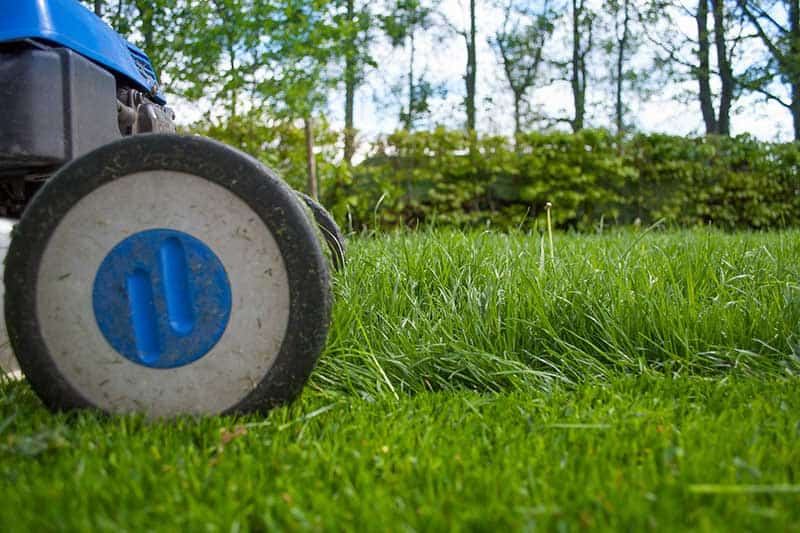
Once again, this will depend heavily on where you live and the local climate. If you live in the west, north, or east of the US, you may find cool-season grasses do better. These include Kentucky Bluegrass, Perennial Ryegrass, Bent grass, and more.
If you live in the south, southeast, or southwestern US, you may want to go with a warm-season grass. These include Bermudagrass, Centipede grass, and Bahia grass. Each of these grasses has their own set of benefits, so make sure to look into which will work best for you.
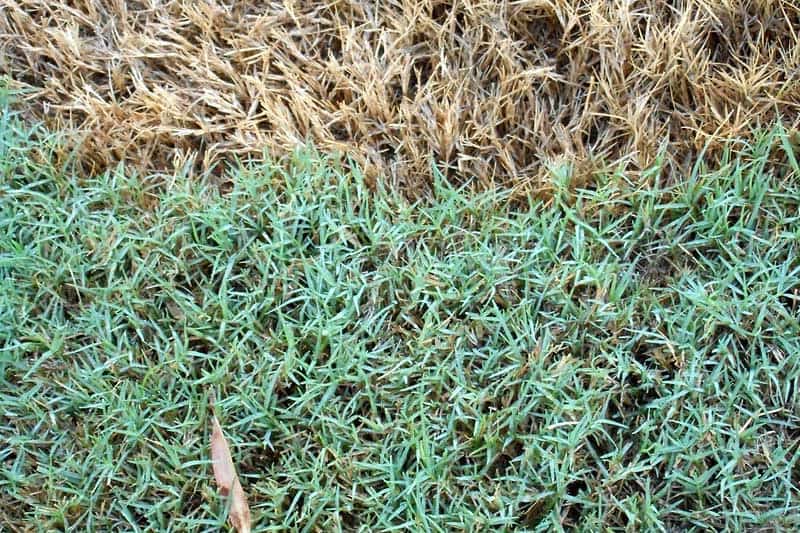
Before overseeding
While overseeding obviously very appealing to many homeowners, we need to first analyze the issues that caused your lawn to yield overseeding in the first place. After all, if we don’t get to the root of the problem, your new grass could just end up thinning or drying out too!
Let’s take a look at some correctable problems and try to identify them:
- Poor soil conditions
- Improper drainage
- Not enough water
- Poor fertility
- Poor air circulation
- Not enough sunlight/too much shade
- Excess thatch
- Grass not ideal for your area
Also take into consideration that you may simply just not be taking proper care of your lawn. If that’s the case, then that’s okay! At least you have identified the issue and can take proper steps to correct it. If you aren’t able to confidently identify the issue, we recommend calling up a local lawn pro and ask them for their opinion. Once identified and corrected, you can move on to overseeding knowing that the new seedlings will be more successful this time around.
Methods for overseeding
There are various overseeding methods, though the most effective for established turf is slit-seeding with a mechanical slit-seeder. These have verticutting blades which cut through the thatch and create a little slit in the soil. The slit depth will vary depending on the grass seed you want. We recommend keeping it less than half the length of the grass seed husk, regardless.
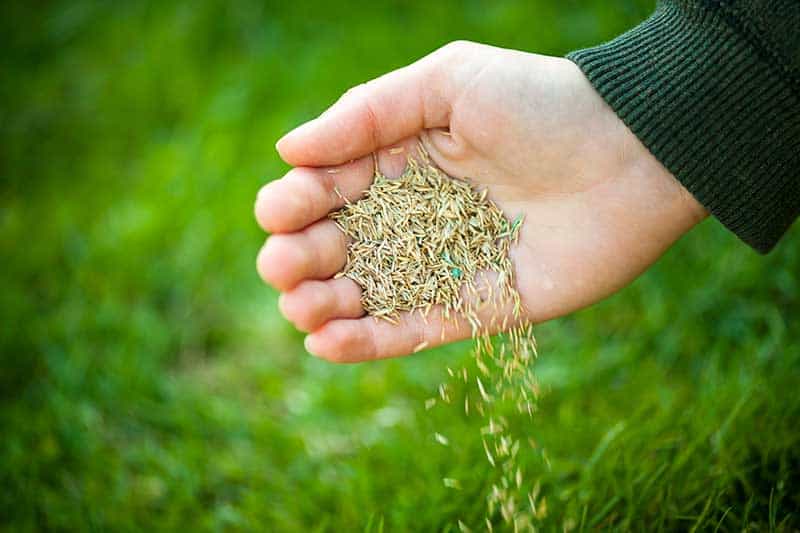
This method is incredibly effective, as the vast majority of the seed makes its way into the soil for high germination rates and thick lawns. We recommend making double passes at 50% of the recommended rate, with each pass going at a 45-degree angle to the other for quick and even results.
Broadcasting seed is the second most efficient method, and it’s the most recommended if you don’t have access to a slit-seeder. The key here is to aerate multiple times before broadcasting, ensuring that the holes are no more than 2-3 inches apart. Once you’re finished overseeding, make sure to water it immediately after to push the seed into the aeration holes.
Unlike our first method, broadcast seeding tends to have seed get caught in the thatch layer. This is why it’s often more effective to use grasses that feature a “creeping” type of growth. If not, they tend to grow in the aeration holes only which ends up in a more clumped grass appearance instead of a thick evenness.
Aftercare
Depending on the local environment, climate, and seed type, you can expect new grass seed to start popping up in about 5-7 days! In less than 8 weeks, an overseeded lawn can be fully established! However, for best results make sure to follow these tips:
- Right after overseeding, water to push seeds into slits.
- For the first 10-14 days, perform a light watering daily.
- After germination, keep watering schedule less frequent but allow for deeper soaking into soil. This promotes deeper/more established roots.
- Once established, water at the recommended frequency depending on the type of grass.



